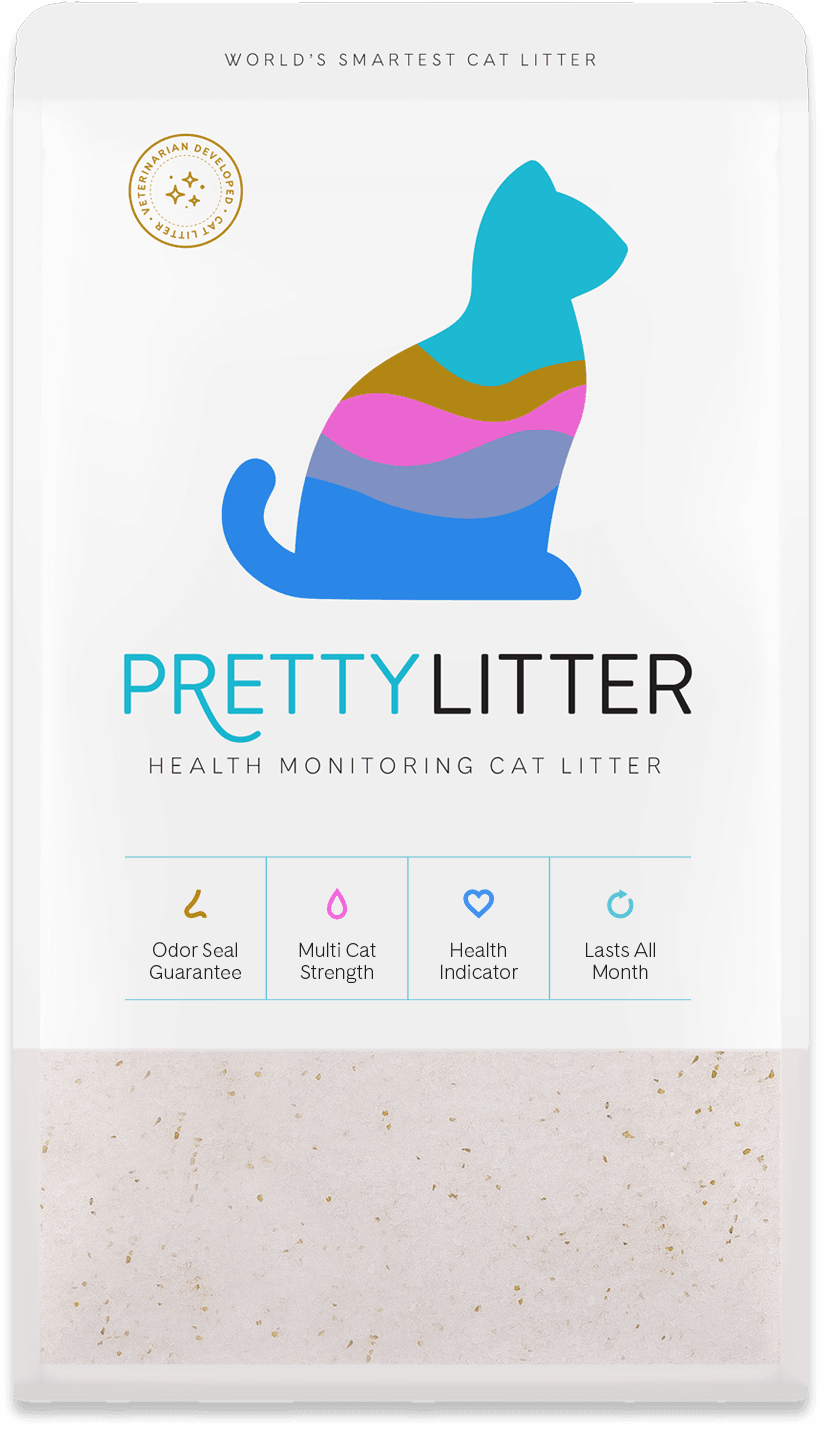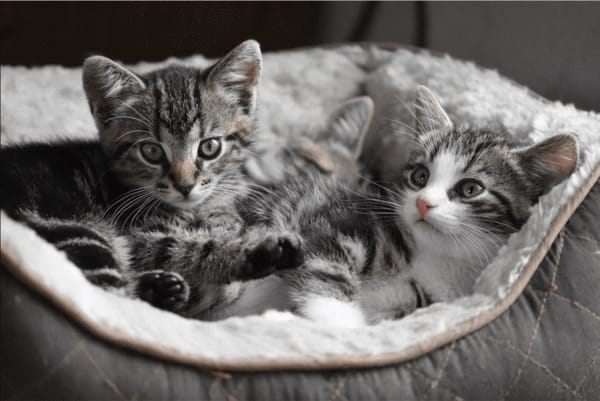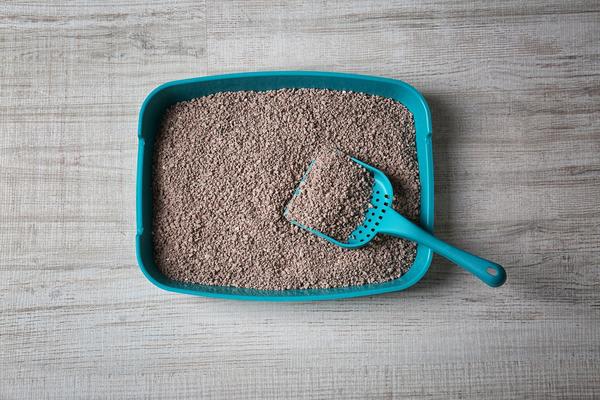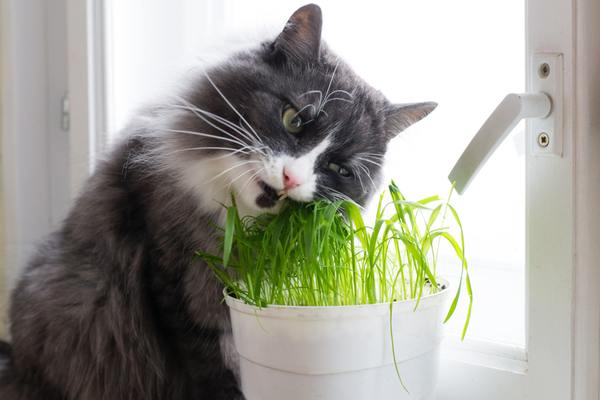February 20, 2024 |10 min read
Understanding Cat Digestion Times

Written by

Updated Aug 9, 2025
Did you know a cat's digestion significantly impacts their overall health and can even influence their behavior? The quality of their diet is integral to their well-being and impacts everything from energy levels to coat luster. In this guide, we’ll explore how long it takes a cat to digest food, what might cause cat digestive problems, and focus on several vital aspects of feline nutrition and digestion to uncover what elevates a meal from acceptable to exceptional for your cat.
Timing of Cat Digestion
Generally, it takes about 12 to 24 hours for a cat to digest food fully. This window allows enough time for food to journey from the mouth, through the esophagus, into the stomach, then onto the small intestine, and finally, the large intestine. During that time, the food travels through their body, gets broken down by natural acids and gut bacteria, and gives them the nutrients they need to stay healthy.
How Cats Break Down Their Meals
Not all cats have the same digestive system efficiency. Factors like age, activity level, and even breed can influence how long a cat will wait to eat and how long it takes for cats to digest food. Younger, more active cats may have a faster metabolism, speeding up the digestive process, whereas older felines might take a bit longer. Some cats may also have a sensitive stomach, which can lead to problems like vomiting, runny poop, or changes in appetite. Things like stress, certain foods, or even swallowed objects (like string or small toys) can upset their system and slow things down.
How Different Diets Affect Cat Digestion
The kind of food your cat eats makes a big difference in how easily it is to digest. As you navigate this, a common question might arise, “Am I feeding my cat enough?” Whether it’s dry food or wet food, each variety interacts uniquely with their digestive system and, in turn, influences how long it takes cats to digest food. This exploration into how different diets are processed reveals the importance of choosing the right nourishment for our feline friends.
Dry Food Digestion
Dry cat food is often high in carbohydrates and may take slightly longer to digest. Its low moisture content means that cats need to drink more water to aid in digestion, potentially extending the digestive timeline. If your cat doesn’t drink enough, this can lead to issues like hard feces, constipation, or other problems that are easy to miss until they’re more serious.
Wet Food Digestion
Wet cat food, on the other hand, is softer and closer to what cats would eat in the wild. It’s usually easier to break down and less likely to cause cat digestive problems. Because it has more moisture, it helps things move smoothly through their system and can be gentler on their stomach.
Cat Litter That Prioritizes Their
Health & Your Happiness.
to get your first bag for only $14.99
How Often Should You Feed Your Cat?
So, how many times a day should a cat eat to ensure they're receiving the right amount of nutrition within this digestion window — without creating digestive problems? Most adult cats thrive on two small meals per day, spaced about 8 to 12 hours apart. This routine gives their digestive system enough time to properly digest food and absorb nutrients without overloading their stomachs. Younger or more active cats may need three or more smaller meals daily to meet higher energy demands, while older cats often prefer smaller, easier-to-digest portions.
Keeping a consistent feeding schedule helps regulate stomach acids and maintain healthy gut bacteria, lowering the risk of infection or other cat digestive problems. Along with balanced nutrition, feeding frequency plays a key role in keeping your cat comfortable and healthy.
How to Support Your Cat’s Digestion
Supporting your cat’s digestive health goes beyond just feeding the right food. Here are some important ways to help their system work well:
- Feed high-quality ingredients: Real meat-based diets with no fillers reduce the chance of sensitivities and digestive upset.
- Keep your cat hydrated: Moisture from wet food or fresh water helps digestion and keeps waste soft and easy to pass.
- Watch for signs of trouble: Changes in appetite, vomiting, diarrhea, constipation, or irregular litter box habits can signal digestive problems or even early infection and require a vet’s treatment.
- Prevent ingestion of foreign objects: Cats sometimes swallow non-food objects that can block the digestive tract or cause infections.
- Control parasites: Parasites can severely disrupt digestion, so regular checkups and parasite prevention are essential.
Signs and Signals: Decoding Your Cat's Digestive Health
Noticing how your cat acts post-meal can clue you into their digestive well-being. Contentment and regular, healthy eliminations suggest good digestive health. Yet, appetite changes, discomfort, or irregularities in bathroom habits may signal a potential problem. These signs may indicate anything from food sensitivity to an underlying infection, urging a vet consultation.
What Happy Cat Digestion Looks Like
After enjoying a meal, a cat in good health should appear satisfied and energetic, with no evident discomfort. This is a cat's way of showing us that their digestive system is doing just fine. Here are the key signs:
- Content behavior without any restlessness or discomfort
- Regular, consistent bowel movements with well-formed feces
- An overall demeanor of well-being and alertness
These indicators are important for assessing whether your cat is digesting their food properly and getting the right amount of nutrients absorbed from their diet.
Red Flags: When Your Cat’s Digestion Needs a Closer Look
Sometimes, our feline friends communicate discomfort through changes in their routine or behavior, signaling that their digestive health might be off balance. Keep an eye out for:
- Decreased appetite or increased appetite
- Vomiting or regurgitation of food
- Diarrhea or unusually soft stools
- Constipation or difficulty using the litter box
These symptoms could point to a range of cat digestive problems, caused by diet, infection, internal bacteria, parasites, or even something more serious like disease.
When to Seek Professional Advice
If you're unsure about your cat's diet or notice any of the above signs, it's time to talk to a veterinarian. Vets can help you identify the cause of your cat’s discomfort, provide a targeted treatment, and offer specific advice based on your cat's needs, helping you adjust their diet for optimal health. They can tackle issues from portion size to dietary changes, ensuring your cat isn't over or under-eating. Simply put, a vet visit can clear up confusion, keep your cat healthy, and give you peace of mind.
How PrettyPlease Elevates Cat Digestion
We understand that every meal your cat enjoys is more than just food — it's an opportunity to enhance their health and happiness. When food doesn’t digest well, it can cause discomfort, irregular feces, and other problems — but a thoughtful diet can make all the difference. That's why we've dedicated ourselves to creating a cat food that stands apart, focusing on both the quality of ingredients and the science of digestion. Our approach ensures that every bite your cat takes is not only delicious but also packed with everything they need for a healthy digestive system.
Ingredient Integrity
Our dedication to ingredient integrity means no mysteries in their bowl; only high-quality, real ingredients make the cut. The #1 ingredient in our formula is chicken, chosen for its high protein content and its ability to meet the instinctual cravings of cats. We understand that cats are carnivores at heart, and their diet should reflect what their bodies are built to digest and thrive on.
We steer clear of grains, corn, wheat, and soy, common ingredients that may lead to food sensitivities or digestive problems, as we aim to provide a meal that’s not only delicious but also free from common allergens that can disrupt your cat's digestive system. Each serving of PrettyPlease cat food is fortified with 24 essential vitamins and nutrients, optimized for whole-body health. This nutritional balance supports everything from a healthy coat and skin to robust immune system function, ensuring your cat is not just well-fed but truly thriving.
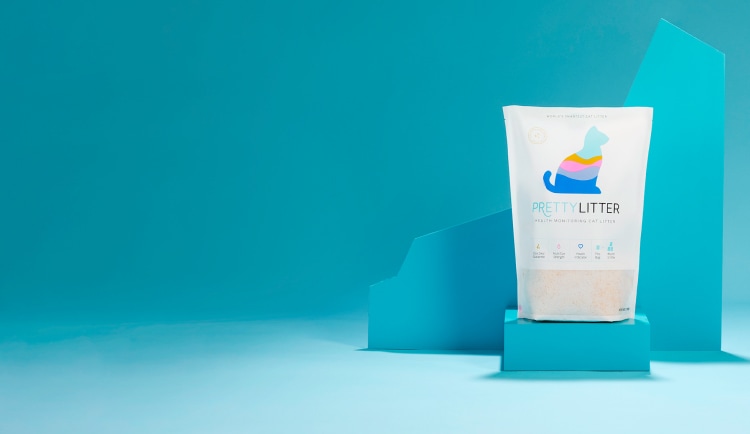
Why PrettyPlease is the Heart of Healthy Digestion
Cats have a unique digestive system that requires a balanced diet and careful monitoring to keep working properly. Understanding how long it takes a cat to digest food, recognizing the signs of healthy digestion, and choosing the right food all ensure your cat leads a happy, healthy life. With PrettyPlease cat food, you can rest easy knowing your feline friend is getting the best in nutritional care, supporting not just their digestive health but their overall well-being.
A well-digested meal leads to a happier cat and, in turn, a happier cat owner. Just as we choose the best cat litter for our homes, selecting the right food for our feline companions is a testament to our love and care for them.
Sources:
- VCA Animal Hospitals. Feeding Times and Frequency for Your Cat. https://vcahospitals.com/know-your-pet/feeding-times-and-frequency-for-cats
- Journal of Animal Science. Effects of Five Carbohydrate Sources on Cat Diet Digestibility. https://academic.oup.com/jas/article/doi/10.1093/jas/skad049/7039594
- Veterinary Sciences. Cats and Carbohydrates: The Carnivore Fantasy? https://pubmed.ncbi.nlm.nih.gov/29140289/
